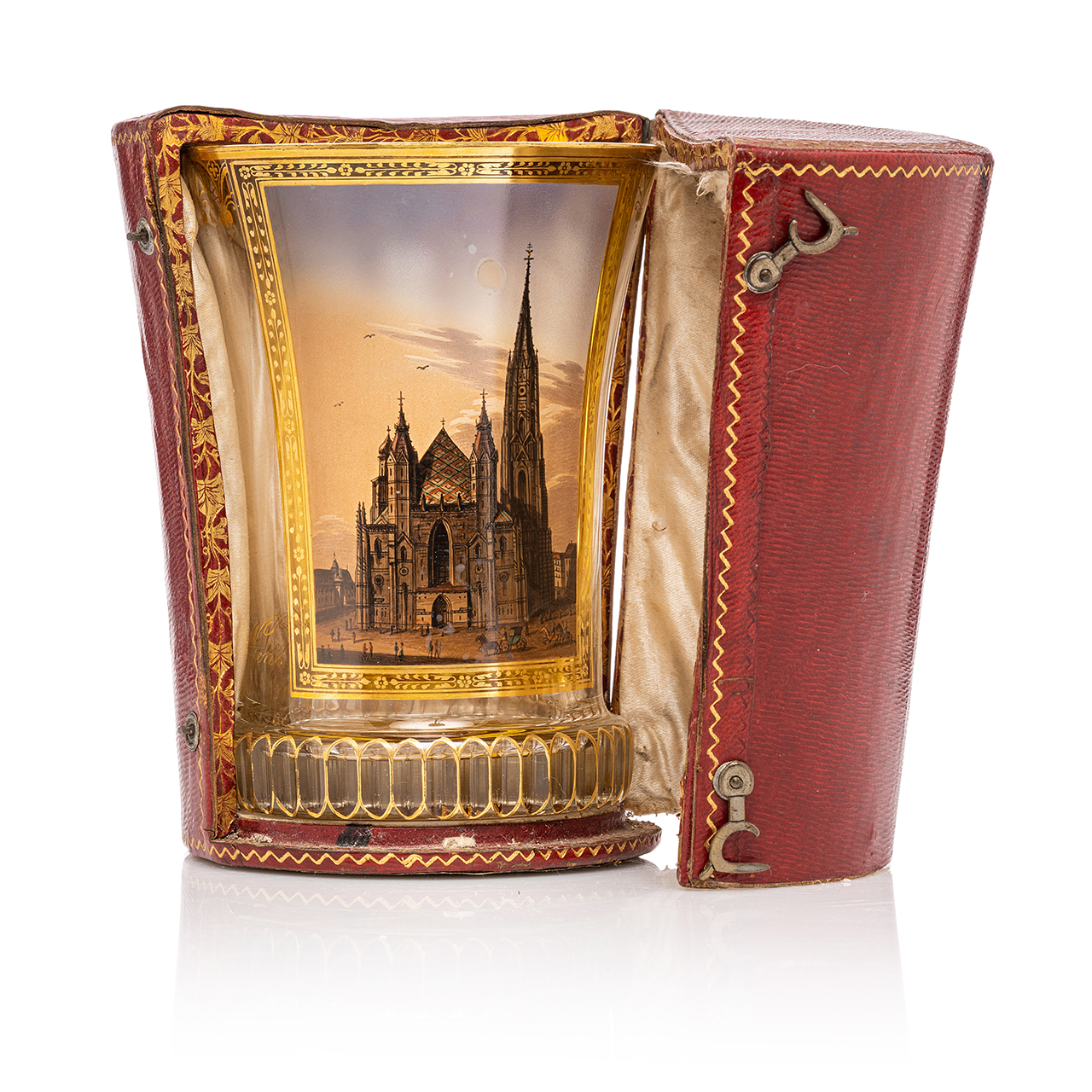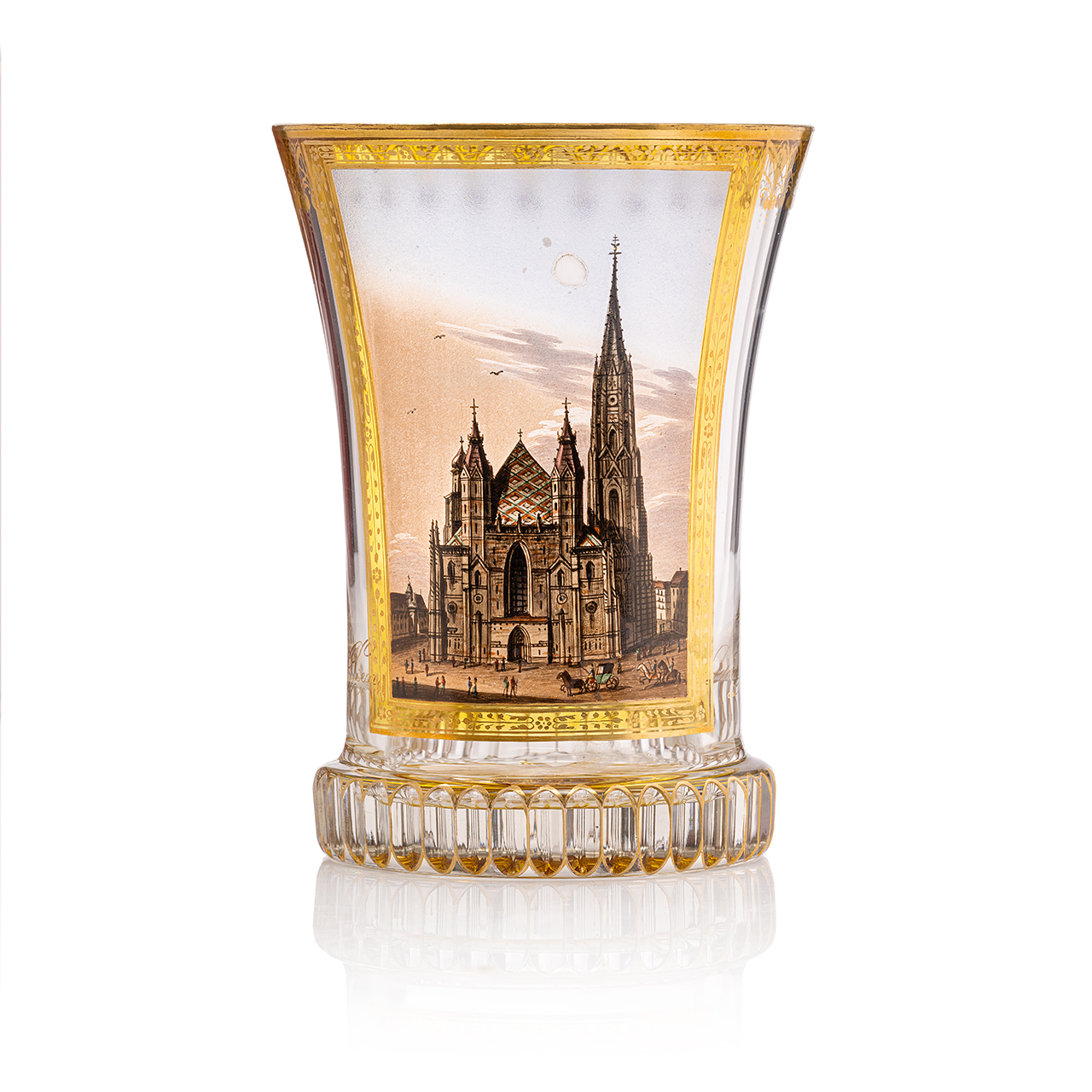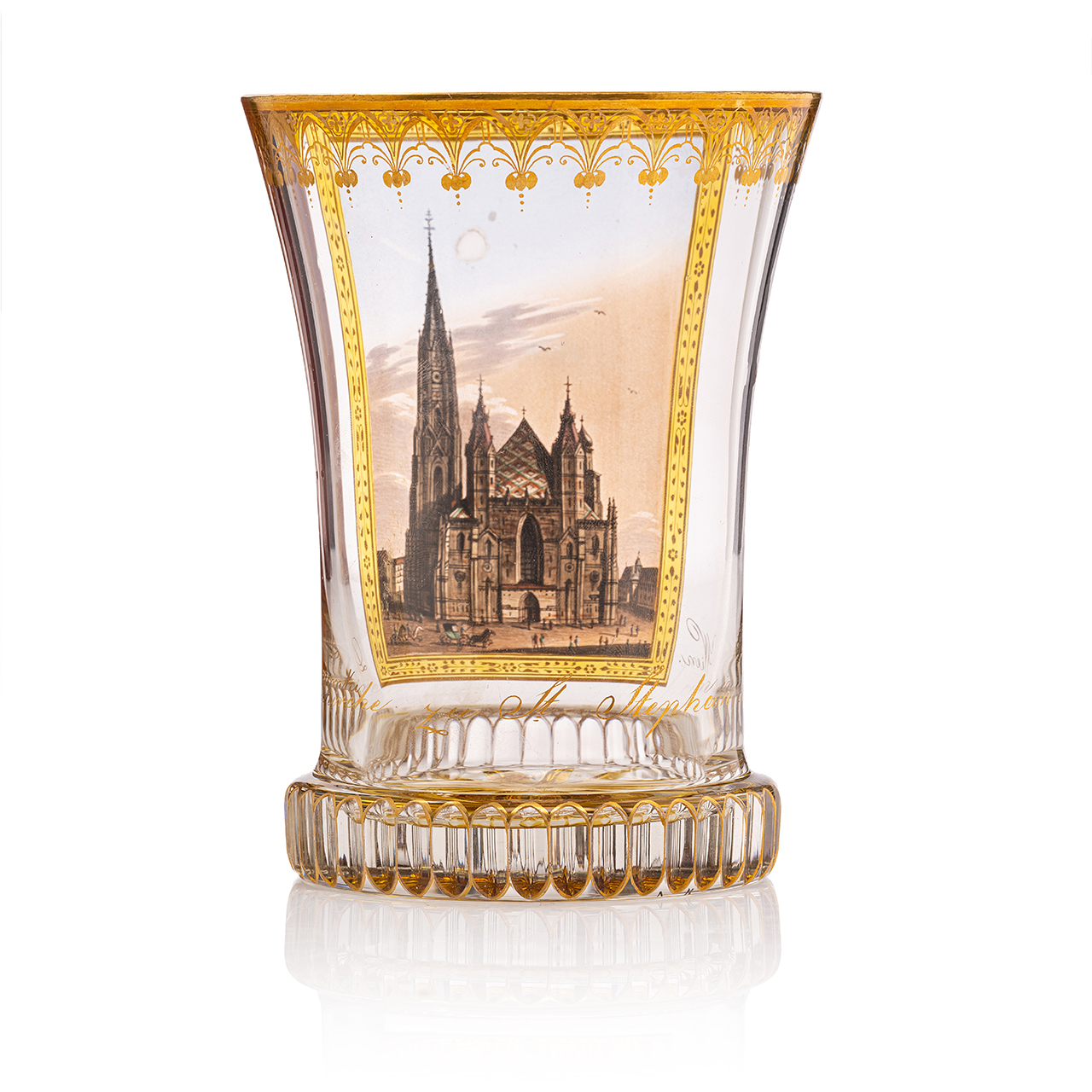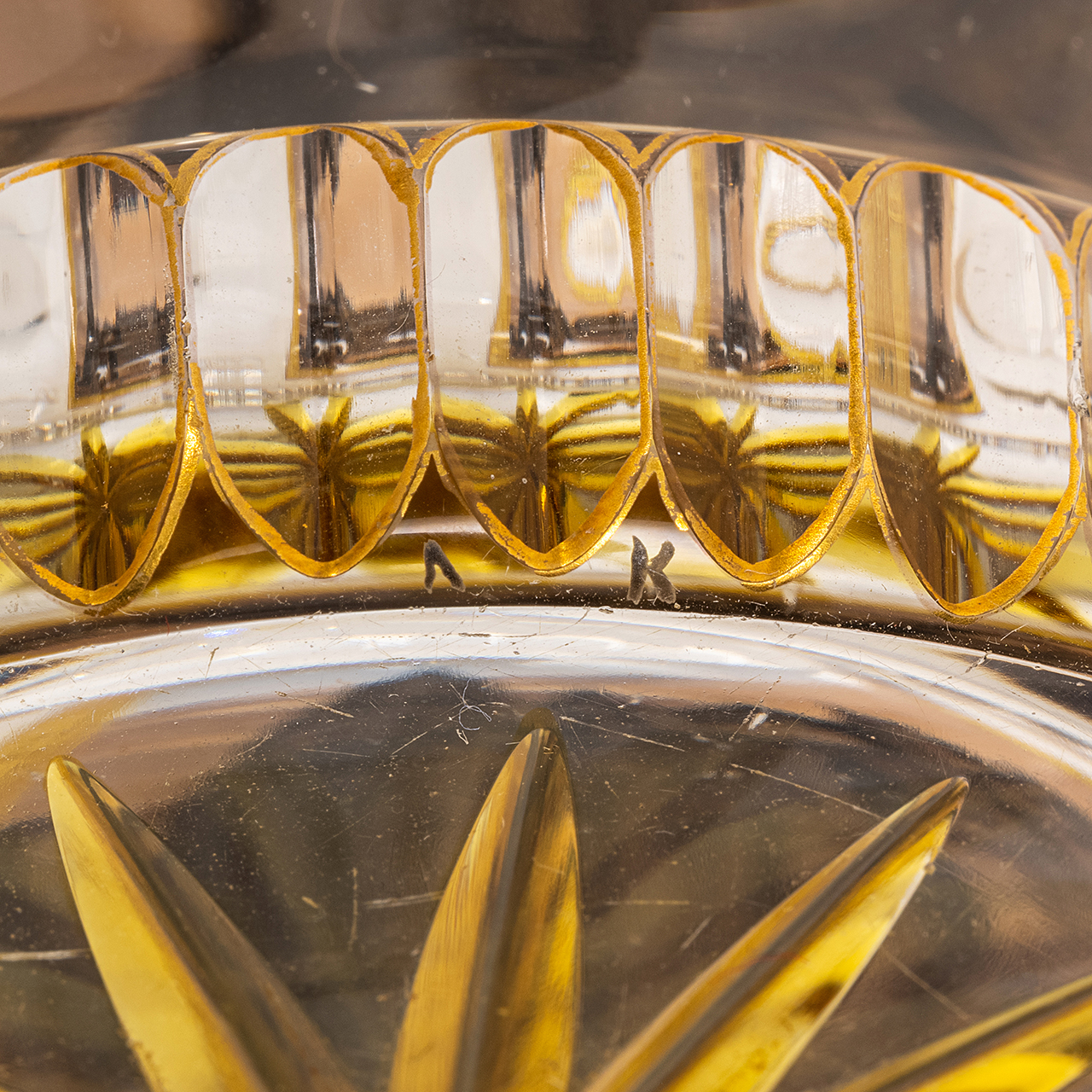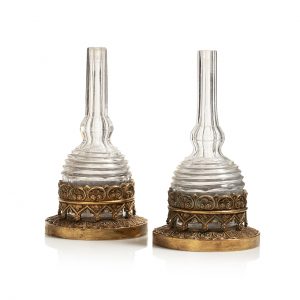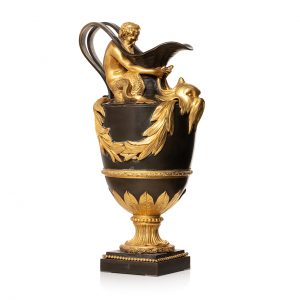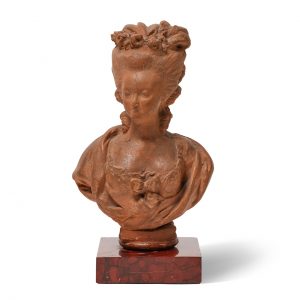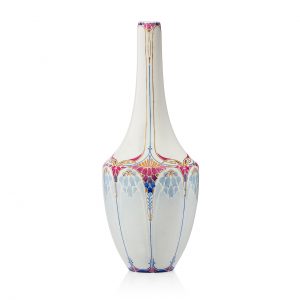Glass beaker, painted with view of St Stephen's Cathedral in Vienna.
Captioned in gold "Domkirche zu St Stephan in Wien".
Signed on curve of the foot diametrically opposite the painted scene: "A[nton]. K[othgasser]".
One spot at the scene, one chip at the reverse of the base.
Vienna (Austria), circa 1815-1820.
Preserved in its red morocco leather case.
H. 11,5 x L. 8,5 cm.
French aristocratic family from early 19th century.
- Gustav E. Pazaurek, Eugen von Philippovich, Gläser der Empire- und Biedermeierzeit, 1976, p. 189, fig. 169.
- Kovacek, Katalog Biedermeier, Einblicke in die Idylle, 2007, p. 74, cat. no. 41, a comparable goblet with edge of the indented bottom signed A. K. in black.
- Paul von Lichtenberg, Mohn & Kothgasser, Transparent bemaltes Biedermeierglas, 2009, p. 286, fig. 170.
A very similar beaker with slight variants in the decor, sold at Auktionshaus im Kinsky GmbH, Vienne, 18 octobre 2016, lot 409 (ill. 1).
Anton Kothgasser (or Kothgaßner), born in Vienna in 1769, was a porcelain and glass painter from 1781 at the Wiener Kunstakademie. He studied figural drawing with German painter Heinrich Füger, from 1784 at the Wiener Porzellanmanufaktur to 1840, employed as their most significant design painter, painter no. 96. From 1811, next to working for the Manufaktur and independently of it, he addressed glass painting, to which he was introduced by Gottlob Samuel Mohn, who was twenty years younger than him and had moved to Vienna in 1811. He received numerous awards, among others on 6 September 1811, and the permission on 20 May 1816 "to work at home for some months at his glass painting". He first dedicated himself to sheet glass painting, but soon preferred hollow glass painting using transparent enamel colour (transparent painting). This technique was invented by Samuel Mohn, who was particularly focused on this method between 1815 and 1830.


